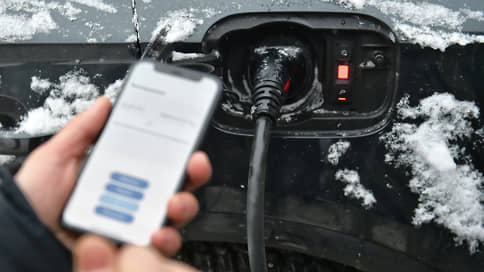Sales of electric vehicles in the Russian Federation will continue to grow in 2024, but at a slower pace
[ad_1]

Sales of electric vehicles in the Russian Federation will continue to grow in 2024, but the pace will slow down by at least half. The consensus forecast of market participants and analysts suggests sales at 30 thousand units, which is approximately twice as high as in 2023. To develop the market, we need to increase the number of cheaper electric vehicles (up to 2 million rubles) and charging infrastructure. So far, the market is formed mainly by cars from more premium brands that are not officially represented in the Russian Federation.
In 2024, the electric vehicle market in the base scenario will grow 2.1 times, to approximately 30 thousand units, according to the NRA study. The negative scenario assumes no market growth. In 2024, Autostat expects that the market for new electric vehicles in the base scenario will reach 25 thousand units (an increase of 77%), in the optimistic scenario – 34 thousand (2.4 times), in the pessimistic scenario – 18 thousand units (by 27%). Let us remind you that the consensus forecast for the entire passenger car market this year is 1.15–1.25 million units. That is, electric vehicles will account for 2.1–2.5% of the market in the base scenario versus 1.3% in 2023.
In an optimistic scenario, NRA expects sales at 40–45 thousand units, which is 2.7–3.2 times higher than in 2023, but for this, the Russian industry must “assemble” about 36 thousand electric vehicles. For comparison, the Ministry of Industry and Trade, based on PPK data (JV “Electronic Passport” and “Autostat”), estimated the market for new electric vehicles in 2023 at 14.8 thousand units, noting that “every fifth electric car sold in Russia was assembled within the country ” Thus, we are talking about 2.9 thousand locally produced electric vehicles sold – apparently, these are mainly Moskvich and Evolute. In August 2023, the Ministry of Economy, however, said that the country had already produced 3.2 thousand electric vehicles. At the same time, the production plan for 2023, according to the concept of electric transport development, was 7.4 thousand electric vehicles, and for 2024 – 17.5 thousand. The Ministry of Economy was unable to clarify the current plan.
The NRA believes that in 2023, sales of new electric vehicles increased 4.7 times, to more than 14 thousand units. This is similar to the Autostat report, which, based on PPK data, estimated the market at 14.09 thousand new electric vehicles. At the same time, the top 5 sales are mainly occupied by Chinese Zeekr, which is not officially represented in Russia (market leader, 3.7 thousand units), as well as Volkswagen and Tesla. In addition to them, the top Evolute of Lipetsk Motorinvest (about 2 thousand units), created on the basis of Chinese models, as well as the Voyah brand (also imported by Motorinvest).
Dealers are inclined to estimates similar to the basic forecast of Autostat. Thus, the director of Avilon Electro, Sergei Melyukh, expects that in the current conditions, sales of electric vehicles in 2024 will exceed the 20 thousand mark. A similar forecast is given by BorisHof, specifying that the capacity is primarily formed in the premium segment, where electric vehicles are This is the second or third car in the family and has access to its own charging infrastructure. “Growth will definitely be facilitated by the development of infrastructure, which is now a limiting factor,” they add. The head of the Fresh dealership, Evgeniy Zhitnukhin, expects that more than 19 thousand electric vehicles will be sold in 2024, including due to the growth of the electric filling station network, the release of new models and the availability of incentives.
Nikolai Ivanov, director of the new car sales department at Rolf, agrees that an electric car today is usually the second or third car in a family, pointing out that during long trips there is a noticeable lack of infrastructure. He expects slight growth in the market for electric cars and hybrids, but the growth rate will decrease markedly, including due to the current snowy and cold winter. Anna Utkina, Director of Communications for Avtodom and Autospetscenter, adds that demand is also held back by the small number of specialized service centers: “Servicing electric cars has its own unique features and requires strict adherence to technology.”
In the future, sales of over 50–70 thousand electric vehicles per year are possible only with the appearance of “cheap” versions of cars, up to 2 million rubles, subject to an increase in the density of the refueling infrastructure, say the NRA. According to the concept for the development of electric transport, in 2024 another 1.4 thousand fast charging stations will appear in the Russian Federation.
[ad_2]
Source link





